Categories
- AngularJS Development
- Awards
- Business
- Content Marketing
- Digital Marketing
- Ecommerce Development
- Email Marketing
- Magento
- Microsoft 365
- Mobile App Development
- Mobile Optimization
- MongoDB
- Node.js
- Online Marketing
- Search Engine Optimization
- Shopify
- Social Media Marketing
- Web Development
- Website Design
- Website Maintenance
- WordPress Websites

Download Our Digital Marketing Ebook
Download Our Digital Marketing Ebook
Stop writing content that nobody reads.
You spend hours, maybe even days, writing a blog post. It’s long. It’s well-researched. You’ve sprinkled in your main keyword the “right” number of times, just like the old guides told you to.
You hit publish, feeling hopeful.
And then… zero clicks, zero views.
Nothing. Just a flat line on your analytics graph.

Does this sound familiar?
It’s like studying for weeks for a big exam – reading every chapter, making detailed notes– only to discover on test day that you studied for the wrong subject!
But here’s the good news: The problem isn’t your effort. It’s your playbook. You’re using rules from a game that no longer exists.
This article is your new playbook.
This isn’t another boring, theoretical post. It’s a practical, step-by-step guide. We will show you exactly how to find ideas, structure your articles, and write content that Google and your readers will absolutely love.
Think in Conversations Not Keywords
Before we dive into the “how-to,” let’s talk about one big, simple shift in thinking. This is the foundation for everything that follows.
Why Repeating Keywords Doesn’t Work Anymore
In the old days, SEO was all about one keyword. We’d pick a keyword and repeat it over and over.

But that’s like trying to describe a car by only saying the word “engine.”
An engine is important, for sure! But what about the wheels? The seats? The colour? The fact that it has a great sound system?
Google is much smarter now.

It doesn’t just look for one keyword. It scans your entire article to see if you’ve created a complete picture. It wants to know if you’ve covered the topic from all angles, just like you would in a real conversation.
Always Start with Intent
This brings us to the most important rule in modern SEO: You must understand a user’s intent.
Intent is just a simple word for what someone really wants when they type something into Google.
Think about it. Are they just looking for information?
Or are they ready to buy something?
Your content has to match their goal. If it doesn’t, you’ll fail before you even start.
Let’s look at a few quick examples:
- When someone searches for “best running shoes,” they want a list. They want to compare options and read reviews. Their intent is commercial.
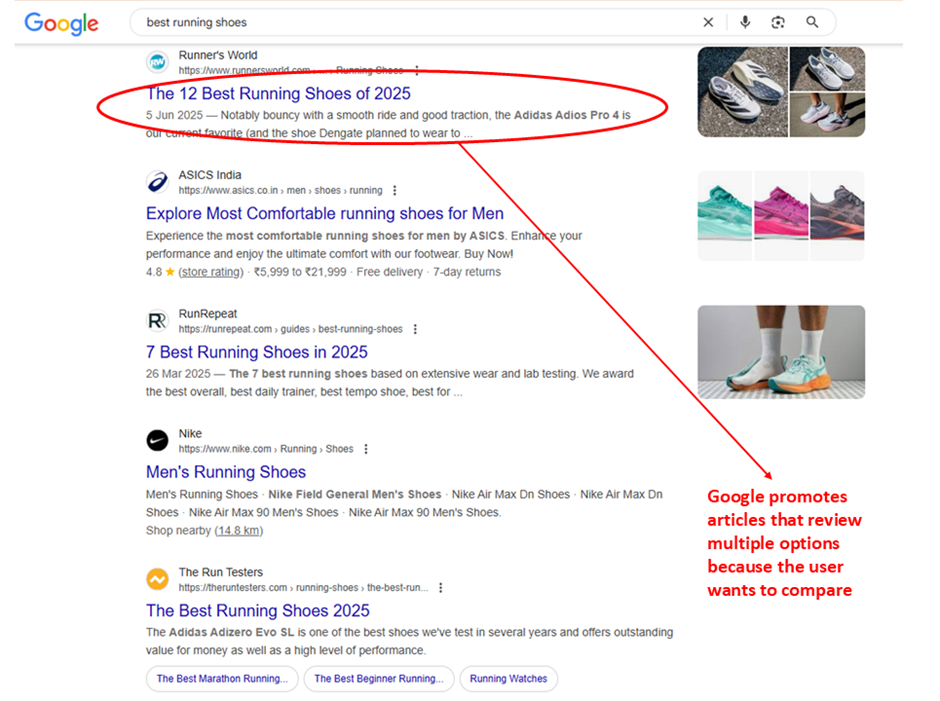
- When they search for “buy Nike Pegasus,” they’re not browsing anymore. They have their wallet out. They want a product page. Their intent is transactional.
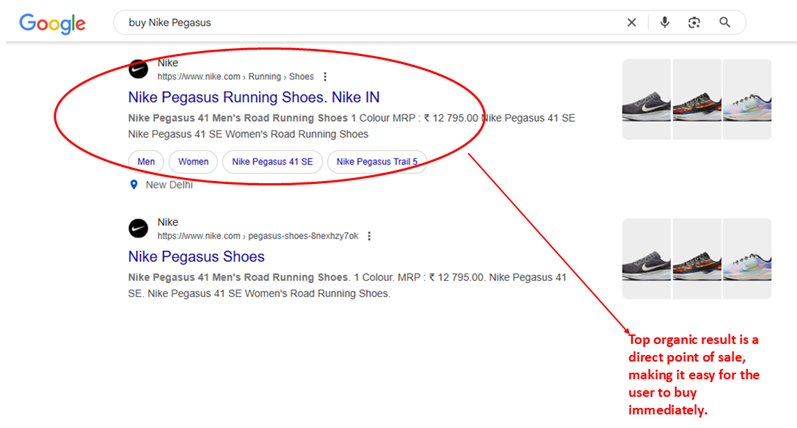
- But if they search for “shin splints from running,” they DON’T want a product list. They want help. They want a guide that explains the causes, symptoms, and treatments. Their intent is informational.

See the difference?
Your content has to be the right answer to their specific question.
Giving Google what it wants is all about giving the searcher what they want. It’s that simple.
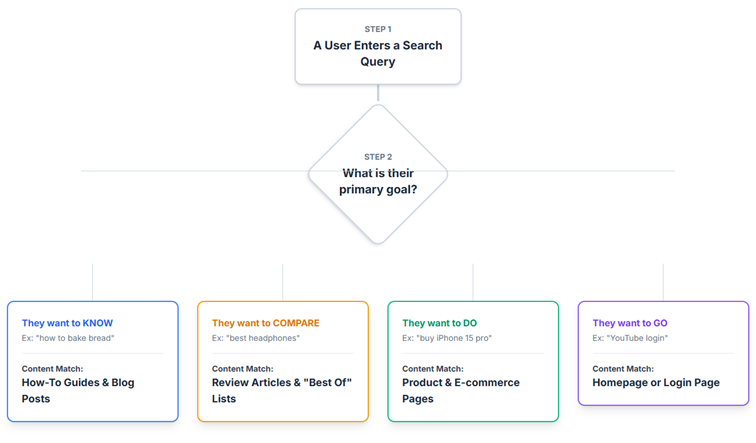
How to Write Content That Actually Ranks
This is the heart of the entire article. This is the practical, step-by-step workshop that will change the way you write content forever.
Let’s go.
Step 1: How to Think Like a Topic Expert
First things first. We need to stop hunting for keywords.
Instead, we’re going to become detectives. Our mission is to find every single question a real person has about our topic. This is called “Question-Based Research.”
Here’s how you do it, step-by-step.
First, just use Google. Seriously. Type in your broad topic, like “SaaS marketing.” Scroll down a bit and look for the “People also ask” box. This is a goldmine of ideas, right there on the page. Also, check the “People also search for” at the very bottom.
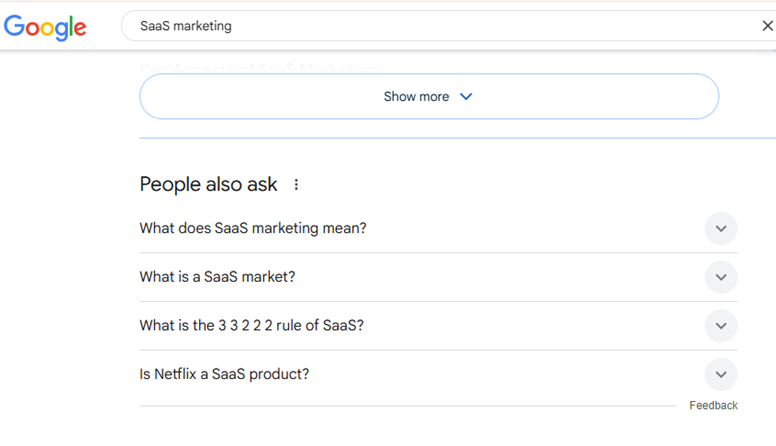
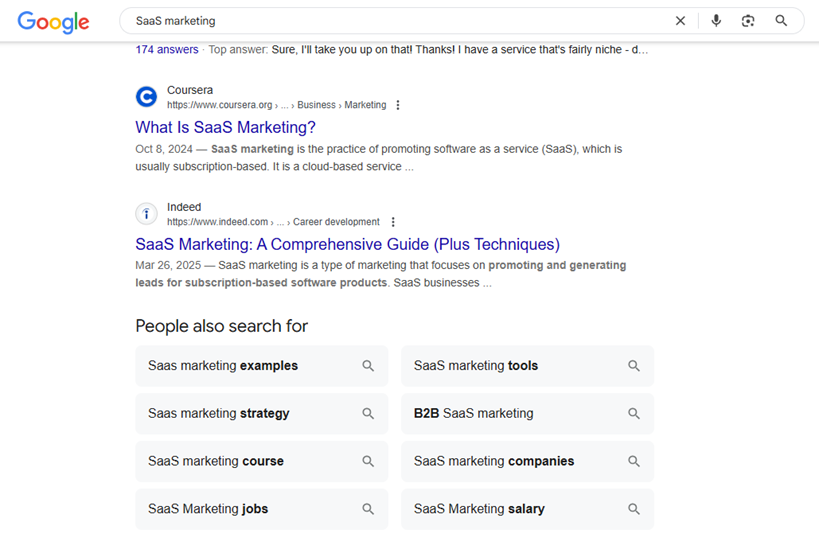
Next, level up your search with a free tool like AlsoAsked.
This tool takes your topic and maps out the “People Also Ask” questions directly from Google. It shows you how questions are connected, creating a branching visual map of what users are genuinely curious about.
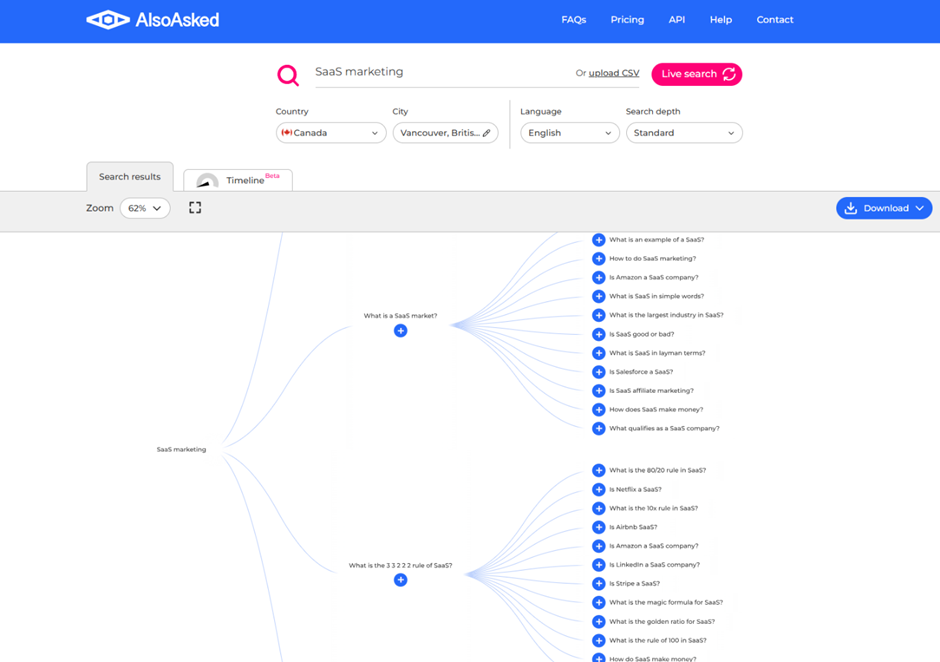
You can see how one question leads to another, giving you a powerful, visual overview of the entire conversation around your topic. It’s an amazing way to see what people really want to know.
Finally, go where people talk. Spend 15 minutes on sites like Reddit or Quora. If your topic is “SaaS marketing,” find the r/SaaS subreddit. Look at the problems and frustrations people are sharing. This is where you find the exact words and phrases your audience uses. It makes your writing feel so much more real.
Step 2: Create Your Content Blueprint
Okay, now you have a giant list of questions your audience is asking.
Your next job is to build an outline that is better and more helpful than anything else out there. We’ll use a simple method called the “Content Gap Analysis.”
It sounds technical, but it’s easy.
Google your main topic and open the top 3-5 articles that are already ranking. Don’t read them word-for-word. Just scan them and make a list of their main headings (the H2s and H3s). These are the core topics your article needs to include just to compete.
Now, pull out your big list of questions from your research. Compare your list to what the top articles are talking about.
Find what they missed. This is the most important part. Maybe they all talk about what a podcast is, but your research shows that people are desperately asking how to find guests for a podcast.
That’s your content gap. That’s your golden opportunity to be more helpful.

Finally, build your outline. Start with the common topics, and then add new sections that fill the content gaps you found. Make sure every heading and subheading in your outline answers a specific question from your research.
Step 3: Injecting Experience and Trust (E-E-A-T) in Writing
You have a killer outline. Now it’s time to write.
But we can’t just write generic, robotic text. We need to build trust with our reader. Google calls this E-E-A-T (Experience, Expertise, Authoritativeness, and Trustworthiness).
Here’s how to do it in simple terms.
Show Your Experience
This is the newest and maybe most important part. You have to prove you’ve actually done what you’re talking about. It separates your content from soulless AI articles.
- Use phrases like: “In my experience...” or “Here’s a mistake I made early on...”
- Add your own numbers: “We ran a small test and found a 20% increase when we...”
- Tell a short story: “I remember working with one client who was struggling with...”
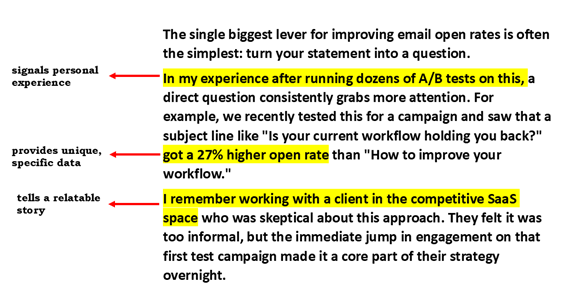
Build Trust with Your Reader
People trust other people, not faceless websites.
- Cite your sources. Don’t be afraid to link out to other experts or to a study that backs up what you’re saying. It shows you’ve done your homework and you’re confident in your information.
- Show who you are. Include a clear and friendly author bio at the end of your post. A picture and a short sentence about your expertise go a long way.
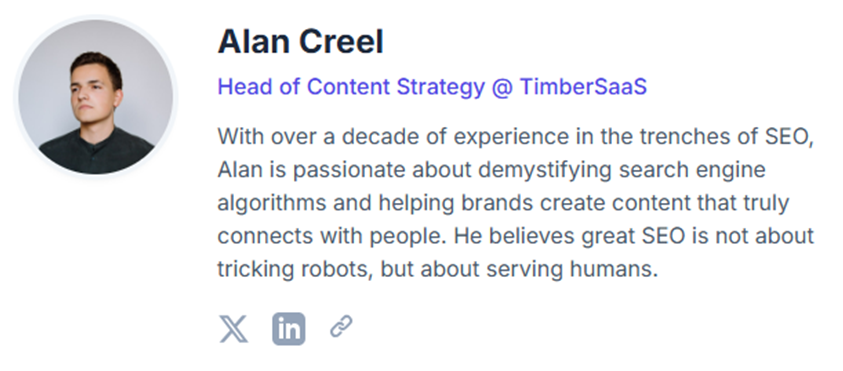
When you combine your unique experience with trusted sources, you create content that is truly valuable. It’s helpful, it’s human, and it’s what Google is rewarding today.
How to Use AI the Smart Way
Let’s talk about the elephant in the room: Artificial Intelligence (AI).
Everyone is talking about it. But most people are using it the wrong way.They ask it to write a full article, then they copy and paste it.
The result is always generic, boring, and soulless content that readers can spot from a mile away.
Let’s be smarter than that.
Think of AI as your super-smart assistant, or your co-pilot.
It’s there to help you do the heavy lifting and speed things up, but you are still the pilot. You are in charge of the strategy, the ideas, and the final product.
Here are a few practical ways to use AI, including the exact prompts to use.
Use Case 1: Accelerate Your Research
You have your topic, but you want to quickly understand all the different angles. Instead of spending hours searching, you can ask your AI co-pilot.
Use this prompt:
“I’m writing a blog post on ‘time management for remote workers.’ What are the common sub-topics, pain points, and related concepts I should cover to create a comprehensive guide?”
Boom.
In seconds, the AI will give you a fantastic bulleted list of ideas, covering everything from “setting boundaries” to “using the right tools” to “avoiding burnout.” It does the brainstorming for you.
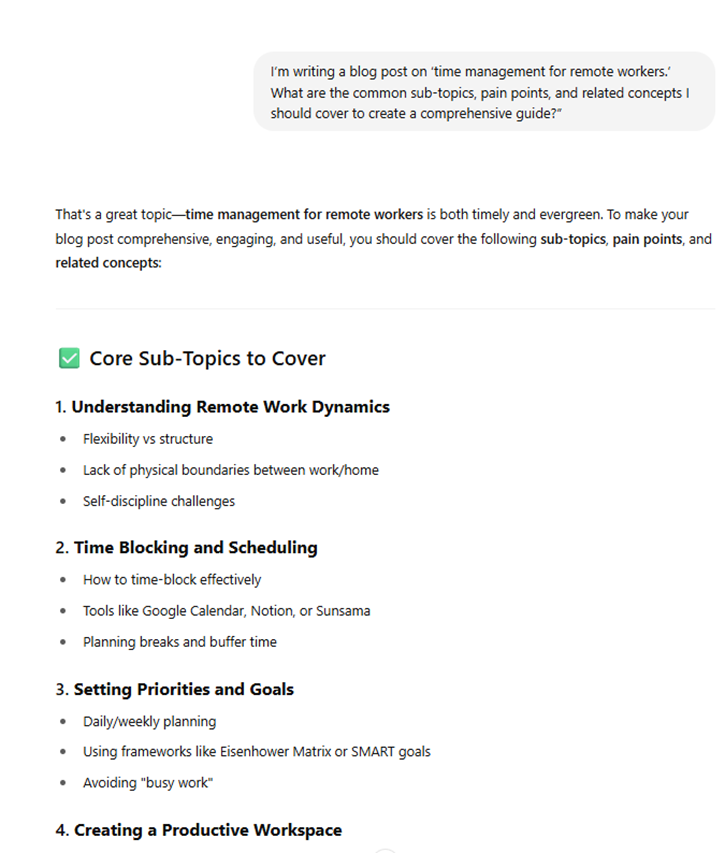
Use Case 2: Create a First-Draft Outline
Okay, you have your list of ideas. Now you need to organize them into a solid structure. AI is amazing at this.
Use this prompt:
“Based on the above topics, act as an expert SEO content strategist and create a detailed blog post outline with logical H2 and H3 headings for the article ‘The Ultimate Guide to Time Management for Remote Workers’.”

Notice how we told the AI to “act as an expert SEO content strategist”? Giving the AI a role helps it provide much better results. What you get back is a clean, organized outline that you can then edit, tweak, and make your own. It saves you hours of work.
Use Case 3: Make Your Writing Crystal Clear
Sometimes, we write a paragraph that’s a little… clunky. It’s full of big words or confusing sentences. AI is like having an editor on call to help you fix it.
Just give it this simple prompt:
“Rewrite this paragraph to be more concise and easier to understand for a general audience: [Paste your confusing paragraph here].”
This is a fantastic way to make sure your writing is always simple, direct, and easy to read. It takes your expert knowledge and makes it accessible to everyone.
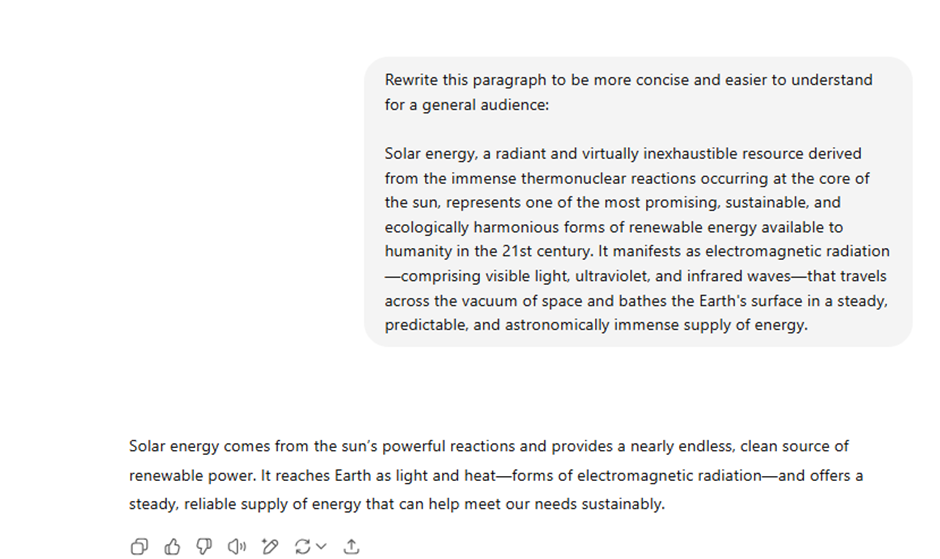
See the pattern? In every case, you are the strategist. You are guiding the tool to do useful work, not just to create generic content. That’s how you use AI the smart way.
Bringing It All Together
And there you have it.
We’ve covered a lot, but it all boils down to a simple, powerful change in how you approach content. The days of trying to trick a robot are over.
The future is about genuinely helping people. So, let’s put your new playbook into a simple checklist you can use every single time.
Your New 5-Step Content Playbook:
Start with Intent. Before you write a single word, ask yourself: What does my reader really want to accomplish?
Research Questions, Not Keywords. Become a detective for their problems. Your goal is to find and answer every question they have.
Build a Value-Driven Outline. Look at what’s out there, find what’s missing, and create a resource that is more complete and more helpful than anyone else’s.
Write with Experience and Trust. Share your unique insights, tell real stories, and cite good sources. Prove that a real, knowledgeable human is behind the keyboard.
Use AI as Your Assistant. Let your co-pilot handle the heavy lifting – like research and outlining – while you stay in charge of the strategy and quality.
Moving from keyword stuffing to this user-focused model isn’t just about pleasing Google.
It’s about building an audience that trusts you. An audience that sees you as a true authority in your field. And ultimately, an audience that wants to do business with you.
This is the smarter approach we live by at Nirvana Canada!

